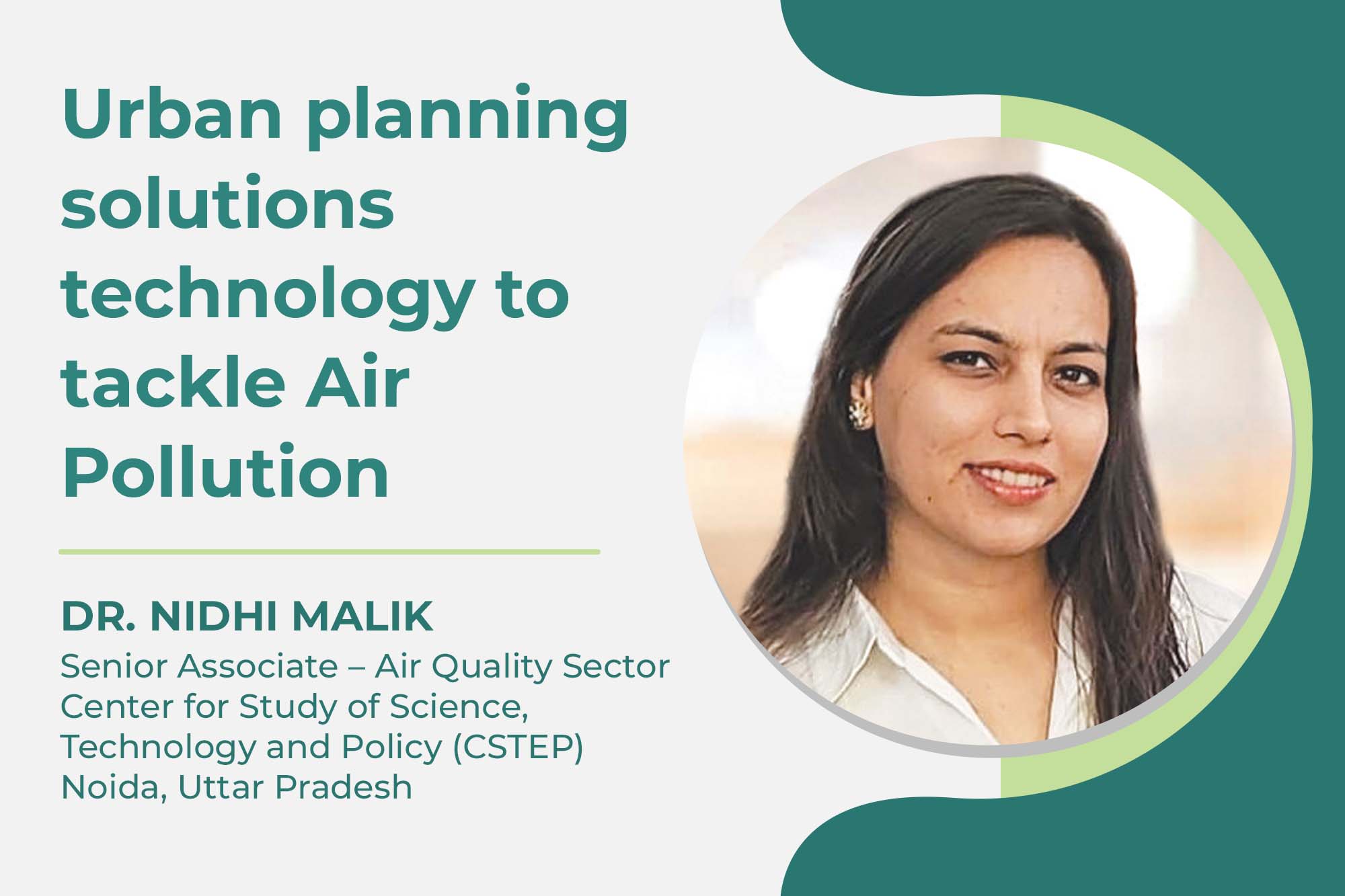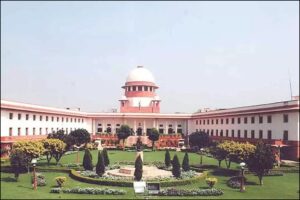Urban planning solutions technology to tackle Air Pollution
According to Dr. Nidhi Malik, Senior Associate at CSSTP, air pollution, both outdoor and indoor, poses serious health risks, especially in urbanising regions like India. From the harmful impact of particulate matter to the role of urban planning and emerging air quality technologies, a multi-pronged approach is essential. Public awareness, clean fuels, and smart ventilation can drive meaningful change.
What are the sources of indoor and outdoor airborne pollutants, and what are the corresponding mitigation solutions?
Outdoor air pollution arises from both natural sources (e.g., dust storms and forest fires) and anthropogenic ones. Anthropogenic sources mainly include emissions from transport, industry, construction, residential biofuel use, and agricultural waste burning. Reducing outdoor air pollution requires targeted action such as transitioning to cleaner fuels, phasing out older vehicles, strengthening industrial emission norms, controlling dust from construction and roads, managing crop residue burning, and improving solid waste management to reduce open waste burning.
Household air pollution (HAP) disproportionately affects rural and low-income urban populations in India, primarily due to the use of biomass for cooking and heating purposes. Contributors to indoor air pollution, especially in urban areas and built environments, may include building materials, cleaning products, paints, tobacco smoke, and the infiltration of polluted outdoor air. These emissions can be mitigated by ensuring access to clean cooking fuels like LPG, promoting advanced cooking technologies, and improving ventilation.
How does exposure to particulate matter like PM2.5 and PM10 impact children and adults?
Long-term exposure to PM2.5 is associated with respiratory and cardiovascular diseases in adults, premature deaths, and increased risk of asthma, respiratory infections, and reduced lung function in children. As per the Global Burden of Disease study, 1.7 million (17.8%) of the total deaths in India were attributable to air pollution in 2019, with 0.98 million being attributable to ambient PM pollution, 0.61 million to household air pollution, and 0.17 million to ambient ozone pollution.
How can outside air be conditioned to improve ventilation and air exchange within indoor spaces?
Since humans exhale carbon dioxide (CO₂), proper ventilation is essential to maintain indoor CO₂ concentrations within acceptable limits. In regions like India, where outdoor air pollution is often high, introducing outdoor air—the most effective way to reduce indoor CO₂—requires filtration to ensure indoor air quality is not compromised. This typically involves using air handling units equipped with HEPA filters to remove particulate matter and activated carbon filters to adsorb gaseous pollutants. Additional air conditioning measures may be necessary to regulate temperature and humidity, but those aspects fall outside the scope of our expertise.
How do your monitoring tools and emerging filter standards address air quality concerns?
Air quality monitoring relies on traditional reference-grade monitors, such as the Continuous Ambient Air Quality Monitoring System (CAAQMS), for regulatory purposes. Although these systems are highly accurate and can measure various pollutants, such as PM2.5, PM10, CO, ozone, NOx, and SO2, as well as temperature and humidity, they are expensive. Recently, multi-pollutant low-cost sensors (LCS) have gained popularity as affordable, portable alternatives that can provide real-time data. When deployed in large numbers, LCS can help fill gaps in existing monitoring networks and identify hotspots in areas lacking regulatory monitors. However, LCS requires calibration and validation against reference-grade monitors to ensure accuracy. Additionally, integrating filtration systems with IoT technology for real-time monitoring can offer a smart solution for purifying air and collecting data on various pollutants.
In the context of increasing construction and urbanisation, what role can urban planning play in reducing air pollution?
Effective urban planning can help reduce air pollution associated with construction and urbanisation by optimising land use, promoting sustainable transportation, integrating green spaces, and regulating construction activities. For example, aligning land use and transport planning can help promote mixed-use development, which reduces long commutes and encourages public transport, cycling, and walking. Further, creating efficient road networks can directly reduce vehicular emissions. Strategic zoning can also limit the proximity of industrial areas or heavy traffic corridors to residential areas, reducing residents’ exposure to harmful emissions. Substantial improvements in air quality can be achieved when urban planning proactively addresses pollution sources and exposure pathways, embedding environmental considerations into long-term city design.
How can public awareness campaigns influence behavior towards air pollution?
Behavioral change plays a vital role in addressing air pollution. Effective public awareness campaigns should translate complex technical data into relatable, actionable messages. Tools like the Air Quality Index (AQI), with its simple, color-coded scales and health advisories (e.g., ‘Good,’ ‘Moderate,’ and ‘Unhealthy’), make air quality information more accessible. When people understand what ‘Unhealthy’ air means for their health (e.g., avoiding outdoor exercise), they become more aware of the issue and are more likely to act.
Campaigns should also actively promote behavioral shifts, including reducing biomass burning, adopting cleaner fuels, and wearing masks during pollution episodes. Framing these actions around immediate health benefits can bring meaningful change. Beyond individual actions, public campaigns can increase awareness of systemic solutions, helping people better understand the role of regulations, technology choices, and planning decisions in improving air quality.
Cookie Consent IAQ India
We use cookies to personalize your experience. By continuing to visit this website you agree to our Terms & Conditions, Privacy Policy and Cookie Policy.



